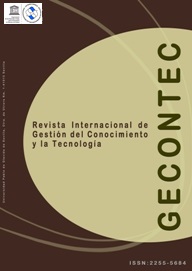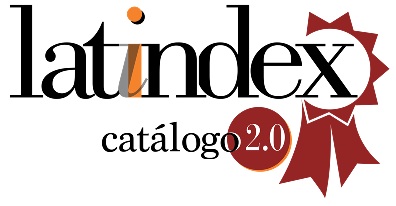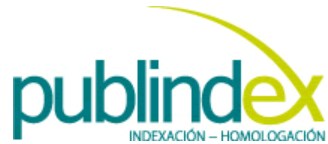The influence of auditor and auditee on mandatory audit fees in France
DOI:
https://doi.org/10.5281/zenodo.10936204Palabras clave:
Mandatory audit fees, joint audit fees, Big Four/Non Big Four, auditor attributes, auditee attributes, influencing factorsResumen
This study employs a pluralistic theoretical framework, integrating the Resource-Based View, neo-institutional, and governance theories, to identify factors explaining joint audit fees. Utilizing a panel dataset of 116 firms over six years (totaling 696 observations) in France, we apply an extension of generalized linear models to handle non-independent observations. Considering both auditor quality and audited company characteristics, our research expands previous studies on French audit fees, which have predominantly focused on auditor quality. We find that joint audit fees are influenced by firm size, audit team composition, sector of activity, and client company size and director count. However, factors such as the choice of internal control framework, separation of control and management functions, and proportion of independent directors do not significantly impact joint audit fees.
Descargas
Citas
Abbott, L. J., Parker, S., Peters, G.F., Raghunandan, K. (2003).The association between audit committee characteristics and audit fees”. Auditing: A Journal of Practice & Theory, 22 (2):17-32.
Al-Najjar, B. (2018). Corporate Governance and audit features: SMEs evidence. Journal of Small Business and Enterprise Development 25 (1): 163-179
André, P., Broye, G., Pong, C., & Schatt, A. (2016). Are Joint Audits Associated with Higher Audit Fees? European Accounting Review 25 (2): 245–274
Audousset-Coulier, S. (2015). Audit fees in a joint-audit setting. European Accounting Review 24(2): 347-377.
Bae, G.S., Choi, S.K., Lamoreaux, P.T., Lee, J.E.(2020). Auditors’ Fee Premiums and Low Quality Internal Controls, Contemporary Accounting Research. https://doi.org/10.1111/1911-3846.12602
Basioudis, Ilias G., Papakonstantinou, E., Geiger, M.A. (2008). Note on audit fee premiums to client size and industry specialization. Abacus 44 (3): 284-309.
Barney, J. (1991). Firm Resources and Sustained Competitive Advantage. Journal of Management 17(1): 99-120.
Beasley, M.S. (1996). An empirical analysis of the relation between the board of director composition and financial statement fraud. Accounting Review 71 (4): 443-465.
Bedard, J. C. Johnstone, K.M (2004). Earnings manipulation risk, corporate governance risk, and auditors' planning and pricing decisions. Accounting Review 79 (2): 277-304
Ben Ali, C., & Lesage, C. (2013). Les auditeurs financiers face aux conflits d’agence : une étude des déterminants des honoraires d’audit en France. Comptabilité – Contrôle – Audit 19(1): 59–89.
Bessiere, V., Schatt, A. (2018). Gouvernance d’entreprise : Nouveaux résultats. Editorial de la Conférence Internationale de Gouvernance. CIG 2017 (Lausanne), Finance Contrôle Stratégie 4 : 1-3.
Bessire, D., Cappelletti, L. et Pigé, B (2010). Normes : origines et conséquences des crises. Economica, Paris
Bhattacharya, A. & Banerjee, P. (2020). An empirical analysis of audit pricing and auditor selection: evidence from India, Managerial Auditing Journal 35 (1): 111-151.
Bliss, M. A., (2011). Does ceo duality constrain board independence? Some evidence from audit pricing. Accounting & Finance 51 (2) : 361-380.
Broye, G. & Schatt, A. (2012), Comment ont évolué les honoraires d’audit en France pendant la crise financière? Revue Française de Comptabilité 456: 24-27.
Caby, J., Hirigoyen, G., (1997). La creation de valeur de l’entreprise. Economica, Paris.
Carcello, J.V., Hermanson, D.R., Neal, T.L., Riley, R.A. (2002), Board characteristics and audit fees. Contemporary Accounting Research 19 (3): 365-384.
Causse, G. Ebondo Wa Mandzila, E. (2015). Les normes comptables dans les pays de l’UEMOA, in Dynamique normative-Arbitrer et négocier la place des normes dans l’organisation, (coordonné par Cappeletti, L. Pigé, B. Zardet, V.), EMS, Paris.
Charreaux, G. (2013). Quelle(s) perspective(s) pour la recherche en gouvernance ? Images et enseignements d’un voyage de 30 ans en pays de gouvernance, Congrès international de gouvernance, « Conférencier invité » [archive], sur http://www.cig2013.org [archive].
Choi, O.H., Kim, J-B.,Kwon, S.Y & Zang,Y. (2010). The Effect of Internal Control Weakness Under Section 404 of the Sarbanes-Oxley Act on Audit Fees. Seoul Journal of Business 16: 1- 43.
Coase, R. (1937). The nature of the firm, Economica 4(16): 386-405.
AFEP/MEDEF (2020). Code de gouvernement d’entreprise des sociétés cotées. AFEP/MEDEF, 1-44.
Contessotto, C. Knecjel, W. R., Moroney, R. (2021). How do audit team industry and client‐specific experience impact audit effort and audit fees? International Journal of auditing 25 (1): 249-268.
DiMaggio, P. et Powell, W. (1983). The Iron cage Revisited: Institutional Isomorphism and Collective Rationality in Organizational Field. American Sociologycal Review 48: 147-160.
Desender, K., Aguilera, R. V., Crespi-Cladera, R., & Garcia-Cestona, M. A. (2011). Board characteristics and audit fees: When does ownership matter. Working Paper. University of Illinois, IL, 39 (1), 71–99.
Fama, E. F., Jensen, M.C. (1983). Separation of ownership and control”, Journal of Law & Economics 26 (2), p. 301-325.
Freeman, R. E. (1984). Strategic management : A stakeholder theory approach, Boston, MA: Pitman.
Francis, J. R., Richard, C., & Vanstraelen, A. (2009). Assessing France’s joint audit requirement: Are two heads better than one? Auditing: A Journal of Practice and Theory 28(2): 35–63.
GAO : Government Accountability Office. (2008). Audits of public companies: Continued concentration in audit market for large public companies does not call for immediate action. Available at http:// www.gao.gov/new.items/d08163.pdf.
Gonthier-Besacier, N., Schatt, A. (2007). Determinants of audit fees for French quoted firms. Managerial Auditing Journal 22: 139–60.
Gramling, A. A., and Stone, D. (2001). Audit firm industry expertise: A review and synthesis of the archival literature. Journal of Accounting Literature 20 (1): 1–29.
Guery-Stevenot, A. (2006). Conflits entre investisseurs et dirigeants. Une analyse en termes de gouvernance cognitive. Revue Française de gestion 5(164) : 157-180
Haak, M., Muraz, M., and Ziesenib (2018). Joint Audits: Does the Allocation of Audit Work Affect Audit Quality and Audit Fees? European Accounting Review 15 (1): 55-80
Hay, D., Knechel, W.R.,Ling, H.(2008). Evidence on the impact of internal control and corporate governance on audit fees. International Journal of Auditing 12 (1), 9-24.
Jensen, M.c., Meckling, W.H.. (1976), Theory of the firm: Managerial behavior, agency costs and ownership structure. Journal of Financial Economics 3 (4): 305-360.
Jizi, M.,Nehme, R.(2018). Board monitoring and audit fees: the moderating role of CEO/chair dual roles. Managerial Auditing Journal Vol. 33 (2): 217-243.
Krishnan, G., and G. Visvanathan. (2009). Do auditors price audit committee’s expertise? The case of accounting versus non accounting financial experts. Journal of Accounting, Auditing and Finance : 115-144.
Lajmi A., Gana, M. (2011). Audit fees, External auditor’s reputation and Characteristics of the Board: the case of Belgium context. Northeast Decision Sciences Institute Proceedings: 2- 15.
Langlois, R.N. et Foss, N.J. (1999). Capabilities and governance the rebirth of production in
the theory of economic organization. Kyklos 52(2): 201-218.
Lee, J.E. (2018). Internal control deficiencies and audit pricing: evidence from initial public offerings, Accounting Finance 58 (4): 1201-1229
Le Maux, J (2014). Effort d’audit et gouvernance : Le rôle des honoraires d’audit, Revue Recherches en Sciences de Gestion -Management Sciences -Ciencias de Gestión, n°102 : 151-170
Liang, K-Y, Zeger, S.L. (1986). Longitudinal Data Analysis Using Generalized Linear Model. Biometrika, 73 (1): 13-22.
Lobo, G.J., Paugam, L. Zhang, D., et Casta, J-F. (2018). The effect of Joint Auditor Pair Composition on Audit Quality; Evidence from Impairment Tests. Contemporary Accounting Research 34 (1) : 118–153
Muniandy, M. (2007), CEO duality, audit committee effectiveness and audit risks. Managerial Auditing Journal 22 (7): 716-728.
Nehme, R., Michael A. et Haslam, J. (2020). Directors' Monitoring Role, Ownership Concentration and Audit fees. Australasian Accounting Business & Finance Journal 14(5): 3-25.
Niskanen, M., Karjalainen, J., & Niskanen, J. (2011). Demand for audit quality in private firms: evidence on ownership effects. International journal of Auditing 15 (1): 43-65
North, D.C. (1990). Institutions, Institutional Change and Economic Performance. Cambridge, University Press, Cambridge.
Peel, M.J., Clatworthy, M.A. (2002). The relationship between governance structure and audit fees pre-Cadbury: Some empirical findings. Corporate Governance : An International Review 9 (4): 286-297.
Pfeffer, J., Salnick, G. R. (1978). The external control of organizations : A resource dependance perspective. New York : Harper &Row.
Palmrose Z.V. (1986). Audit Fees and Auditor Size : Further Evidence. Journal of Accounting Research 24(1): 97-110.
Savall, H. et Zardet, V. (2005). Tetranormalisation- défis et dynamiques. Economica, Paris.
Simon, D., Francis, J. (1988). The Effect of Auditor Change on Audit fees: Test of Price Cutting and Price Recovery. The Accounting Review: 255-269.
Simunic, D.A. (1980). The pricing of audit services: Theory and evidence: Journal of Accounting Research 18 (1): 161-190.
Sirois, L-P., Marmousez, S., et Simunic, D.A. (2016). Proposition d’une nouvelle approche de la relation entre la taille de l’auditeur et la qualité de l’audit : l’importance de la technologie d’audit. Comptabilité – Contrôle – Audit 22 (3): 111 à 144.
Tsui, J, Jabbi, B, Gull, F. (2001). CEO domination, growth opportunity, and their impact on audit fees. Journal of Accounting, Auditing and Finance 16 (3): 189-203.
Wang, Z.L. (2002), Determinants of Audit Fees and Audit Quality: Evidence from China’s Listed Companies. Doctoral Paper, Shanghai University of Finance and Economics.
Williamson, O. E. (1985). The Economic, Institutions of capitalism: Firms, Markets, Relational Contracting. New York, Free Press.
Yatim, P., P. Kent, and P. Clarkson. (2006). Governance structure, ethnicity, and audit fees of Malaysian listed firms. Business papers, School of Business, Bond University
Zaman, M., Hudaib, M. Haniffa, R. (2011). Corporate Governance Quality, Audit Fees and Non‐Audit Services Fees. Journal of Business and Finance accounting 38 (1): 165-197.
Zhang,J Z, Yu,Y. (2016). Does Board Independence Affect Audit Fees? Evidence from Recent Regulatory Reforms, European Accounting Review.25 (4): 793-814.























